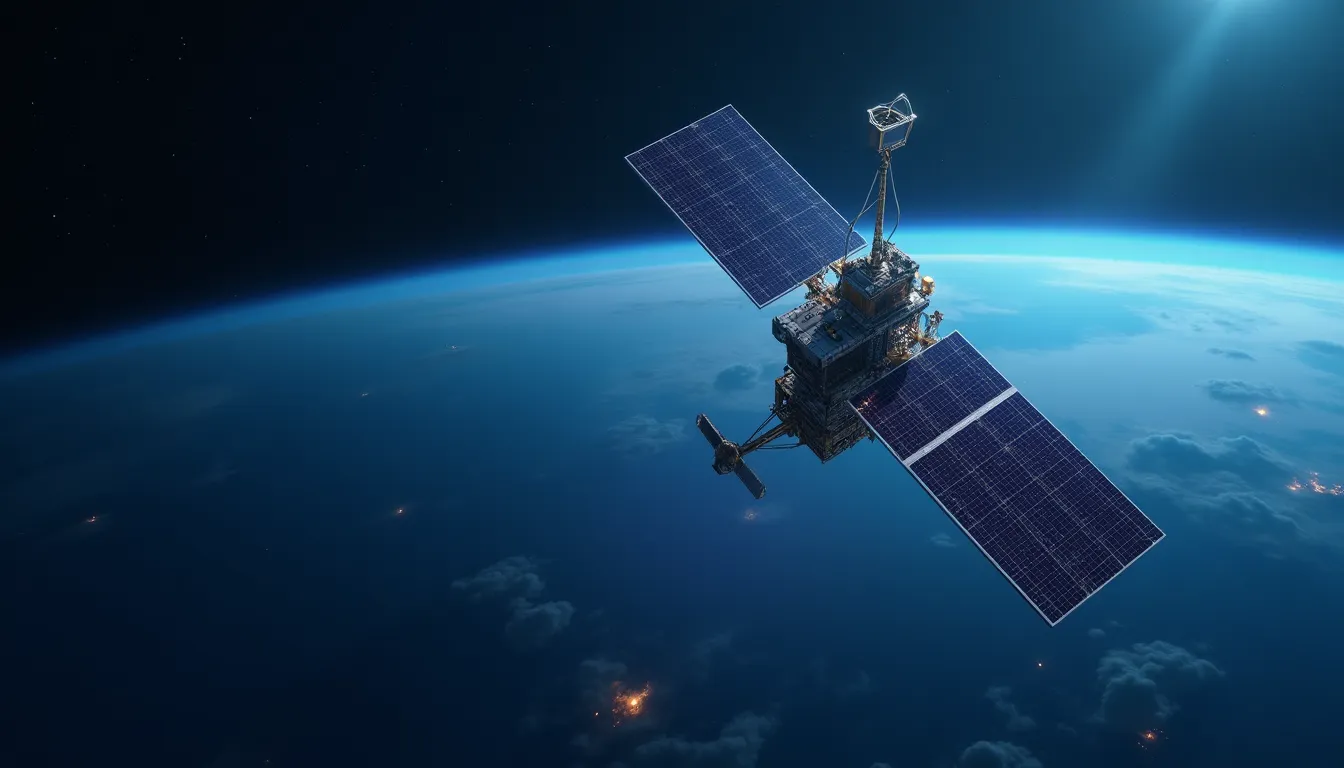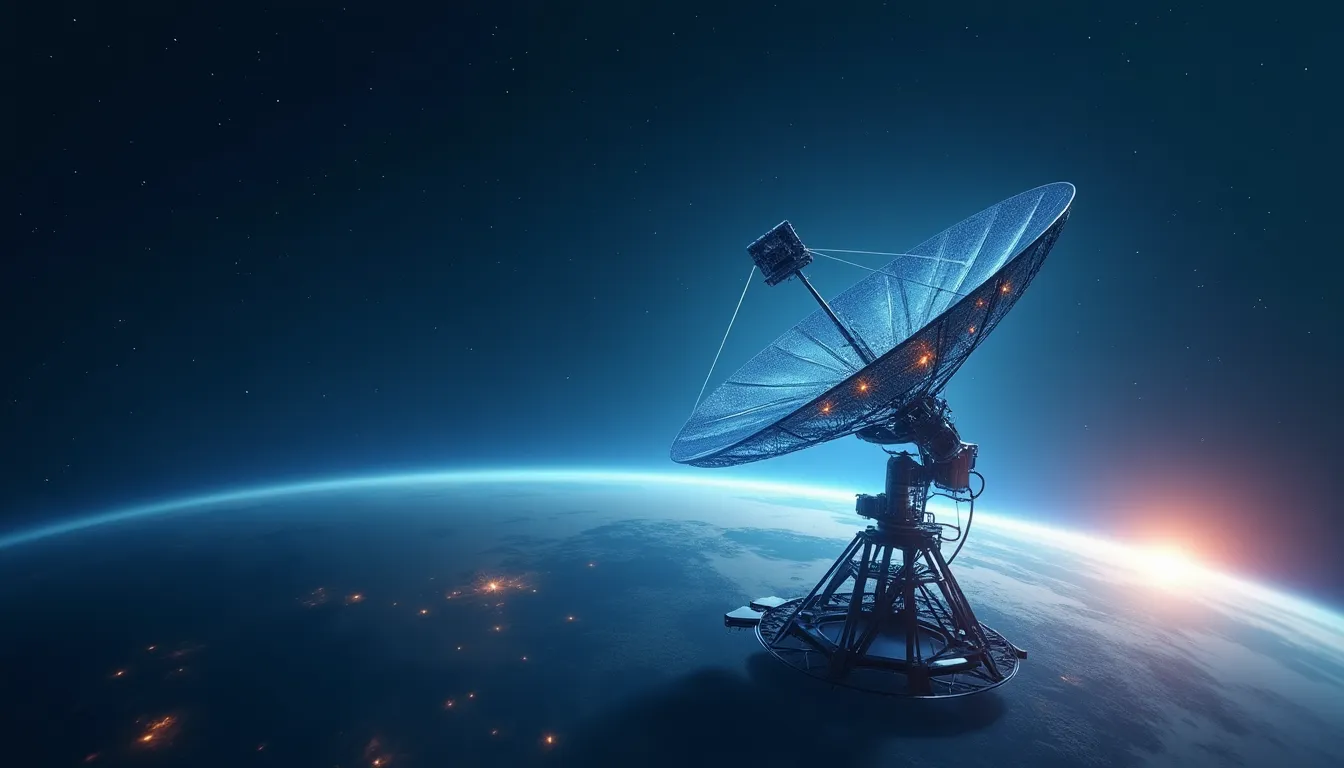The satellite industry is undergoing transformative changes, driven by technological innovations and strategic partnerships. Recent developments showcase significant progress in satellite connectivity, manufacturing, launch activities, and the complex dynamics of space policy. This article delves into these advancements, examining their implications for the aerospace and defense sectors.
Advancements in Satellite Direct-to-Device Connectivity
Recent tests conducted by Lynk Global in collaboration with Turkcell in Türkiye have showcased groundbreaking advancements in satellite direct-to-device (D2D) technology. This innovative approach enables direct communication between satellites and mobile devices, effectively bypassing traditional ground infrastructure. The successful demonstration marks a significant leap toward enhancing mobile coverage and network resiliency, especially in remote and underserved areas.
In addition to Türkiye, similar tests have been conducted in Portugal and Brazil, indicating a growing global trend toward integrating satellite connectivity with mobile devices. These developments are crucial as global demand for seamless connectivity increases, particularly in regions with limited ground-based network infrastructure.
Innovations in Satellite Power Systems
Boeing is set to revolutionize satellite manufacturing with its plans to deploy 3D-printed solar arrays starting in 2026. This advanced manufacturing technique promises to cut production time in half, significantly enhancing the efficiency and speed of satellite deployment. The 3D-printed solar arrays will improve power efficiency, allowing satellites to operate more effectively in low Earth orbit (LEO).
This innovation highlights the shift toward more sustainable and cost-effective production methods in the aerospace sector. By leveraging additive manufacturing technologies, Boeing aims to reduce costs and increase the scalability of satellite production, ultimately benefiting various applications, including telecommunications and Earth observation.
Satellite Launches and Missions
The dynamics of satellite launches continue to evolve, with NASA and SpaceX at the forefront of deployment and resupply missions. Notably, NASA has earmarked September 14, 2025, for launching an observatory dedicated to studying space weather and mapping the solar neighborhood. This mission will include rideshare opportunities for smaller satellite operators, showcasing the increasing accessibility of space for a broader range of stakeholders.
SpaceX continues to play a pivotal role in expanding global internet connectivity through its Starlink program. Recent Falcon 9 rocket launches have successfully deployed additional Starlink broadband satellites into LEO, enhancing internet coverage for millions worldwide. As these networks expand, the potential for leveraging advanced technologies, such as high-precision advanced navigation systems, becomes paramount for ensuring accurate satellite positioning and data integrity.
Navigating Space Policy and Organizational Challenges
The current U.S. space policy environment is characterized by uncertainty and complexity. Proposed budget cuts of up to 47% for NASA’s science programs, including a nearly 15% reduction for the Hubble Space Telescope, have raised concerns regarding the future of satellite and space exploration initiatives. The administration’s top-down approach to space policy, coupled with leadership instability at NASA and a lack of coordination from the National Space Council, poses significant challenges for long-term planning in the aerospace sector.
Industry experts emphasize the need for a more cohesive strategy that balances scientific exploration with commercial opportunities. As the satellite industry evolves, a supportive regulatory framework will be crucial in fostering innovation and ensuring the viability of new technologies.
Emerging Satellite Transport Services
Impulse Space is pioneering a new frontier in satellite logistics with its rapid satellite transport services. Promising same-day delivery to geostationary orbit, this innovation could drastically reduce deployment timelines from months to mere hours. By leveraging advanced propulsion systems and streamlined logistics, Impulse Space aims to meet the growing demand for quick and efficient satellite deployment, particularly for urgent commercial and governmental needs.
This advancement aligns with the broader trend of increasing agility in satellite operations, allowing for faster responses to market demands and geopolitical challenges. As the need for timely data and connectivity grows, innovations in satellite transport services will play a critical role in shaping the future of the industry.
Conclusion
The satellite sector is on the brink of a revolution, fueled by technological advancements and shifting policy landscapes. From direct-to-device connectivity to rapid satellite transport services, the industry is poised for unprecedented growth and innovation. As stakeholders navigate these changes, a collaborative approach that prioritizes efficiency, sustainability, and regulatory clarity will be essential for maximizing the potential of satellite technologies in the years to come.
With the integration of advanced tools, such as precision accelerometers and high-precision fiber optic sensing coils, the future of satellite capabilities looks promising. As we continue to push the boundaries of space exploration and connectivity, the aerospace and defense sectors must remain agile and forward-thinking to harness these emerging technologies effectively.
References
-
Month: September 2025 (spaceflightnow.com) - 9/18/2025 The Starlink 17-12 mission will send the two dozen broadband internet satellites into a polar, low Earth orbit. SpaceX is targeting liftoff from pad 4E at …
-
The Space Advocate Newsletter, September 2025 (www.planetary.org) - 9/17/2025 *## This month
🎭 Who’s in charge of space policy?
💸 We see top-down, often contradictory directives.
🌌 Budget cutters adore a power vacuum.
How does space policy get made in this administration? Reagan had SIGs (Senior Interagency Groups), George W. Bush had PCCs (Policy Coordinating Committees), the George H.W. Bush and the first Trump administration had the National Space Council. But in the second Trump administration, no such organizational structure has yet emerged.
Instead of a protracted inter-agency deliberation process, where all stakeholders have a chance to provide input and guidance to policy decisions, we see the inverse: the issuance of executive orders that assert new policy and then direct agencies to coordinate and implement it as necessary. This reflects the top-down, centralized policymaking approach characteristic of this administration.
There is also the question of who is responsible for civil space policy within the White House. The second Trump administration is not unique in lacking a dedicated staff position for this topic; many Presidential administrations relegate NASA-related policy decisions to the Office of Science and Technology Policy or the National Security Council.
But we are in a particularly uncertain moment with NASA. Elon Musk’s role in the administration ended in high drama and bad blood. The administration’s nominee to lead the agency, Jared Isaacman, was pulled just days prior to his confirmation, with no new nominee yet announced. The agency has seen two acting administrators and a flood of senior-level departures, including senior political appointees. The National Space Council, announced as re-established in May, is missing in action. Vice President Vance, who nominally leads the council, has said nothing publicly about space or the space policy.*
-
Same-day delivery comes to space, as Impulse promises satellite transport in hours, not months (techcrunch.com) - 9/17/2025 Amazon made same-day delivery the benchmark on Earth. Impulse Space is pitching a similar concept for satellites bound for geostationary …
-
Boeing’s 3D-Printed Solar Arrays Will Power Satellites Starting in 2026 (www.twineearlylearningcenter.com) - 9/15/2025 In a groundbreaking announcement, Boeing has revealed plans to revolutionize satellite technology with 3D-printed solar arrays.
-
What’s Happening in Space Policy September 14-20, 2025 (spacepolicyonline.com) - 9/15/2025 Here is SpacePolicyOnline.com’s list of space policy events for the week of September 14-20, 2025 and any insight we can offer about them.
-
2025 NASA News Releases (www.nasa.gov) - 4/11/2025 NASA, Northrop Grumman, and SpaceX are targeting no earlier than 6:11 p.m. EDT, Sunday, Sept. 14, for the next launch to deliver science investigations, …
-
News - Lynk Global (lynk.world) - 2/9/2023 September 14, 2025. Lynk Global CEO Ramu Potarazu on life after SPAC. Lynk Global. Only a bold satellite operator takes on SpaceX, especially in the nascent …



